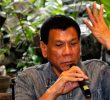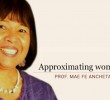Battering, sexual harassment, sex trafficking, prostitution and dislocation due to land-use and crop conversions and other forms of deprivation continue to haunt local grassroots women. The latest City-wide Social Weather survey conducted by the Ateneo de Davao University indicated favorable picture of gender consciousness among city residents that may counter the monitoring results of local Gender Watch in 1999 on its legislative measure.
It can be recalled that Gender Watch challenged the local government, in gist: while the local government of Davao City takes pride in its Women Development Code, it has yet to satisfactorily prove that it made a dent in making the local government employees aware of the implications of its legislative measure on gender asymmetry (Gender Watch-DPF, 1999).
Interestingly, Davao City could be a fertile ground for developing alternative ways of helping. It is one of the major political centers in the country. It is the launching point for the Brunei-Indonesia-Malaysia- Philippines East Asia Growth Area or BIMP-EAGA plans and schemes, oftentimes serving as host to national and international trade fair and conventions boosting tourism albeit doubts on sex tourism surrounds it.
It is the base of more than a hundred traditional as well as developmental NGOs and seat for all types of community-based programs within sectoral and mixed people’s organizations. It has to its record in 1982, three major women groups or centers in the island: one focused on education, training, research and publications, the Women Studies and Resource Center, Inc (WSRC); one on advocacy-campaign and mobilization of women, the Women’s Alliance for True Change-Mindanao (WATCH-Mindanao), the seed of the membership of Gabriela-Mindanao. And the third, PILIPINA, which is focused on women’s education and legal services.
WSRC published one of the first Mindanao publications highlighting sectoral issues of women focused on economic, socio-cultural and political dimensions of women’s lives in a particular class and sector. And WATCH-Mindanao spearheaded the first wave of mass mobilizations of women against the Marcos dictatorial rule and a great number of them came from the sectors of urban poor, peasants, workers and the low-income professionals, including the enlightened religious women.
The women reached out by the three organizations found a basis of unity during the Marcos regime: state violence against women as illustrated in the sexual molestations and sexual assault by the members of the Armed Forces of the Philippines of women political activists. Since then various organizations have sprouted, building a distinct movement by and for women, and pursuing the promotion and protection of women’s rights within the framework of social transformation.
In 2007, there were more or less 25 regular distinct women’s programs in the city this did not include those people’s organizations with short and long term women’s projects and community-based organizations of women.
Until today, there are three major networks of women groups working independently but tactically together on specific local issues: the ever militant Gabriela, the moderate PILIPINA and the local government aligned and socio-civic oriented, Women Network Group (WOMENET).
In 1996, community-based organizations and women’s groups led by the members of Gabriela, formed the “March 8 Convenors” that became the regular and yet loose organization establishing mechanisms for women in the city to coordinate and collaborate on the annual commemoration of the International Day of Women Workers.
The local women’s groups sustain the holding of Women Summit (17th) as mandated by the Women Development Code. The annual gathering of women of the city ensures consistency of local government and people’s organizations’ coordination and collaboration on gender-specific concerns, a cursory review of the implementation of the Women Development Code and other policy outcomes.
Interestingly, the people’s movement for justice, freedom, peace and genuine change has gained enough strength in the city as it manages to sustain consciousness of people who are constantly confronted with national issues affecting the Philippine economy, sovereignty and culture. A level of political maturity of the populace is at its peak with mass mobilizations continuously set against the failure of national leadership to meet people’s basic needs and respect human rights. The local women’s groups highlight their specific issues in these mass actions.
Given the backdrop of a vibrant women’s movement in Davao City, as a licensed social worker, I submit that social work’s professional and collective visibility in the women’s movement is wanting. To rectify the situation, the Mindanao Working Group for Reproductive Health and Sexuality initiated sometime in 2005 a review of the social work curriculum towards integrating gender. Two schools of social work (MSU-Marawi and Holy Cross of Davao College) took part in the review and integration process. Lately, the National Association for Social Work Education (NASWEI) held sessions to improve engagement with people using gender lens.
On March 8, International Working Women’s Day, women of courage may be celebrating it as a day to glean state policies’ impact on the lives of the women living in poverty. The gender mainstreaming project appears to be a course adopted by the state devoid of a will in addressing social and economic inequalities.
Davao City may submit itself as an exhibit qualifying its trailblazing gender and development work, lessons and challenges put forward towards defining a holistic approach to the woman question.










